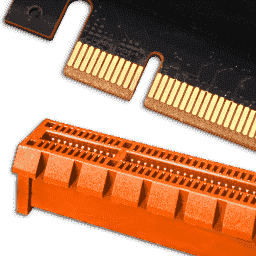Intel Arc A770 Tested with PCIe 3.0 and Resizable BAR Off
Source: Tech Power Up added 10th Oct 2022Introduction
The PCI Resizable BAR feature is a critical ingredient of the memory-management architecture of Intel Arc “Alchemist” GPUs. The Arc “Alchemist” GPU family, and the Xe-HPG graphics architecture it’s based on, are Intel’s first attempt at a high-performance gaming GPU that’s actually making it to market. The GPU supports DirectX 12 Ultimate, including ray tracing, and its software-feature set is contemporary. Being “new” to this segment means that Intel gets to build its raster graphics, ray tracing and memory management architectures from the ground-up, by using whatever the land provides (in this case, a feature PCI-SIG innovated). Its memory architecture relies on heavy burst memory transfers over the PCI-Express bus to the GPU memory, and needs it as a monolithic address-space. The company didn’t undertake the AGP to PCIe transition in the early-2000s, and doesn’t want to reinvent the memory aperture wheels NVIDIA and ATI/AMD did at the time, which is why resizable-BAR is almost a system requirement.
PCI Resizable BAR is a novelty feature introduced by the PCI-SIG way back in 2007 alongside PCIe Gen 2, as sizes of graphics card dedicated memory were crossing the 1 GB-mark. The feature allowed the CPU to see all of the GPU’s memory as a single addressable block, rather than through 256 MB apertures. Neither NVIDIA nor AMD bothered implementing it back then, and built several subsequent generations of PCIe GPUs using fixed BAR sizes of 256 MB, until AMD implemented resizable BAR for the PCIe root-complex of its “Zen 2” processors, and RDNA2 graphics architecture, rebranding it as “Smart Access Memory.” It produced tangible single-digit percentage performance gains in games, and soon the feature caught up with NVIDIA drivers and cards. Intel’s PCIe roots support resizable-BAR all the way back since 6th Gen “Skylake,” and the feature has been added through BIOS updates to most 300-series chipset motherboards (and newer).
Intel goes as far as to recommend not buying its Arc GPUs if your PC doesn’t support Resizable BAR, or you don’t want it enabled for whatever reason. Enabling it has several dependencies, such as booting the machine in UEFI mode (as opposed to legacy mode), for your boot drive to have a GPT partition (and not MBR), for CSM to disabled, for you to use a 64-bit operating system, and for the motherboard to have above-4 GB mapping of PCI devices enabled. TechPowerUp GPU-Z has the ability to tell you if Resizable-BAR is enabled, and if not, exactly which of the requirements aren’t being met. Simply click on the Resizable BAR field in the main screen of GPU-Z, or find it in the Advanced Tab.
In this article, we show you if Intel is right in telling people without resizable-BAR not to buy its GPUs, and just how much of an impact the feature makes. The A770 features a PCI-Express 4.0 x16 host interface, which tempts us to test the card in PCIe Gen 3 mode, by making our test system’s motherboard limit PEG to Gen 3 in the BIOS setup program. This is relevant, because there are processors with PCIe Gen 3 PEG and Resizable BAR, such as Intel 10th Gen Core “Comet Lake” and AMD Ryzen 7 5700G “Cezanne” APUs.
media: Tech Power Up
Related posts
Notice: Undefined variable: all_related in /var/www/vhosts/rondea.com/httpdocs/wp-content/themes/rondea-2-0/single-article.php on line 88
Notice: Undefined variable: all_related in /var/www/vhosts/rondea.com/httpdocs/wp-content/themes/rondea-2-0/single-article.php on line 88
Related Products
Notice: Undefined variable: all_related in /var/www/vhosts/rondea.com/httpdocs/wp-content/themes/rondea-2-0/single-article.php on line 91
Warning: Invalid argument supplied for foreach() in /var/www/vhosts/rondea.com/httpdocs/wp-content/themes/rondea-2-0/single-article.php on line 91
